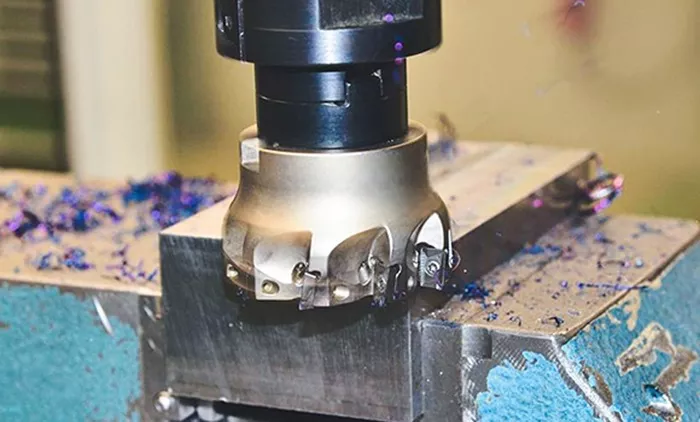Shanghai Hanbang 3D Tech Co., Ltd (HBD), a leading maker of metal Additive Manufacturing (AM) machines, introduced a titanium milling cutter head produced using additive manufacturing at TCT Asia 2025. The component, made from Ti6Al4V alloy, highlights how integrated AM can reduce lead times, cut costs, and minimize material waste in the tooling industry. The milling cutter head measures 62 x 62 x 53 mm and was produced on HBD’s eight-laser 400 Laser Beam Powder Bed Fusion (PBF-LB) AM machine.
Milling tools are essential in modern manufacturing. They play a key role in important sectors like aerospace, automotive, and precision mold-making. The quality of these tools affects machining efficiency, the accuracy of the workpiece, and production costs. Because of this, milling tools are important to the industry’s move toward smarter and more efficient manufacturing.
HBD explains that as the need for higher precision and productivity grows, traditional milling tools show several limitations:
- Heavy weight and low adaptability: Solid tools are heavy. This makes it hard for smaller machines to handle large cutters, which limits what can be machined.
- Weak vibration resistance: Conventional casting methods cannot optimize the tool’s internal structure. This causes more vibrations, which damage the surface finish and reduce tool life.
- Low manufacturing efficiency: Traditional manufacturing uses many steps such as forging, machining, and assembly. These steps cause material waste and longer production times.
HBD’s new cutter head uses a bionic honeycomb lattice structure inside. This design was created through topology optimization. The lattice makes the cutter over 60% lighter and improves vibration resistance. These improvements solve two key problems of traditional tools. The lighter weight also lets smaller machines use bigger milling heads. This boosts cutting performance, improves machine efficiency, and extends spindle life.
The HBD 400 metal AM machine used for production has a build volume of 350 x 400 x 400 mm and uses eight 500-watt lasers. It can build parts up to 12.8 times faster than machines with two lasers. This speed lets manufacturers produce many tools at once, meeting the high-volume demand in milling tool production. The machine uses bi-directional powder recoating for better stability and quality. It also has optimized energy control to reduce overheating and create dense parts with minimal stress.

